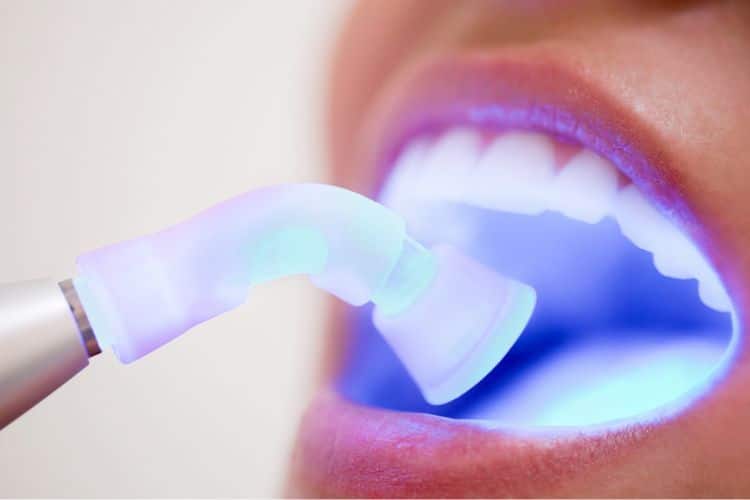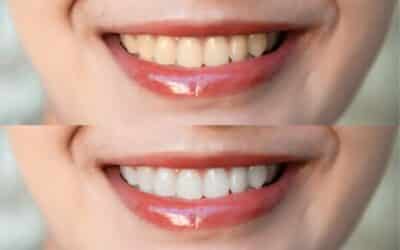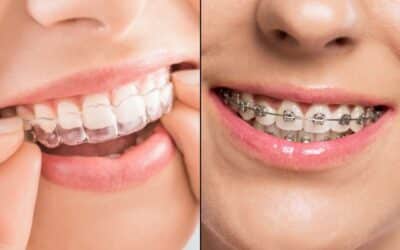Cavities are among the most common dental problems, affecting people of all ages. When left untreated, they can lead to tooth decay, infection, and even tooth loss. Fortunately, advancements in dental technology have provided effective solutions for restoring teeth affected by cavities. One of the most widely used and highly preferred methods is composite fillings. Unlike traditional silver (amalgam) fillings, composite fillings offer several benefits, including superior aesthetics, durability, and a safer material composition.
Many patients today opt for composite fillings due to their ability to blend naturally with teeth while also providing strong and long-lasting protection.
Understanding Composite Fillings
Composite fillings, also known as tooth-colored fillings, are made from a blend of resin and finely ground glass particles. This material is designed to mimic the natural color and texture of teeth, making composite fillings an excellent choice for both front and back teeth. They are widely used to treat cavities, repair chipped teeth, and even reshape misaligned teeth.
The application process for composite fillings involves several steps:
- Removing Decay – The dentist cleans out the decayed portion of the tooth.
- Layering the Composite Resin – The composite material is applied in layers, with each layer hardened using a special curing light.
- Shaping and Polishing – Once the filling is complete, the dentist shapes it to match the natural contours of the tooth and polishes it for a smooth finish.
This process allows for a strong and aesthetic restoration that blends seamlessly with surrounding teeth.
Aesthetic Advantages of Composite Fillings
One of the biggest reasons patients choose composite fillings is their ability to blend in with natural teeth. Unlike silver fillings, which are easily noticeable when you talk or smile, composite fillings are designed to be virtually invisible. The resin material used in these fillings can be color-matched to blend perfectly with the shade of the surrounding teeth, making them an ideal choice for anyone who wants a discreet restoration.
This is especially important for fillings in visible areas, such as the front teeth. Traditional amalgam fillings leave a dark, metallic spot that can be aesthetically unappealing, whereas composite fillings provide a natural look that maintains the beauty of a patient’s smile.
Additionally, composite fillings do not discolor teeth over time. Silver fillings can cause a grayish tint to the tooth as they age, leading to an unnatural appearance. Composite fillings, on the other hand, maintain their color and appearance for many years with proper care.
Durability and Strength of Composite Fillings
A common misconception is that composite fillings are less durable than their metal counterparts. However, modern advancements in dental materials have made composite fillings significantly more resistant to wear and tear.
Composite fillings bond directly to the tooth structure, creating a strong and reinforced restoration. This bonding process helps:
- Strengthen the remaining natural tooth.
- Reduce the risk of cracks and fractures.
- Maintain tooth integrity over time.
While metal fillings rely on mechanical retention, meaning they sit inside a drilled-out cavity without bonding to the tooth, composite fillings actually adhere to the tooth structure. This creates a solid and durable restoration that is less likely to cause long-term damage.
Patients who opt for composite fillings can enjoy a strong bite and normal chewing function without worrying about early deterioration. With proper oral hygiene and regular dental check-ups, composite fillings can last for 10 years or more.
Minimized Removal of Healthy Tooth Structure
Another major advantage of composite fillings is that they require less removal of healthy tooth structure compared to amalgam fillings. When placing a silver filling, dentists must remove a larger portion of the tooth, including some healthy enamel, to create enough space for the filling to sit securely. Over time, this can weaken the tooth, making it more susceptible to fractures.
With composite fillings, only the decayed portion of the tooth is removed, preserving more of the natural structure. This minimally invasive approach:
- Maintains overall tooth strength.
- Reduces the risk of future tooth damage.
- Helps prevent the need for more extensive dental procedures, such as crowns or extractions.
By preserving as much of the natural tooth as possible, composite fillings contribute to long-term oral health and stability.
Biocompatibility and Mercury-Free Composition
One of the most significant concerns surrounding traditional amalgam fillings is their mercury content. While amalgam fillings contain a mixture of metals, including silver, tin, and copper, they also contain approximately 50% mercury, which has raised health concerns among some patients. Although studies suggest that the mercury in amalgam fillings is stable and does not pose an immediate risk, many people prefer to avoid potential exposure.
Composite fillings are 100% mercury-free, making them a biocompatible and safer choice for those concerned about metal fillings. Additionally, composite materials do not cause allergic reactions or sensitivity issues, making them suitable for a wider range of patients.
For individuals with existing metal fillings, many dentists now offer amalgam removal and replacement with composite fillings, allowing patients to transition to a more modern, aesthetically pleasing, and biocompatible option.
Lower Sensitivity to Temperature Changes
Another advantage of composite fillings is their resistance to temperature-related expansion and contraction.
Metal fillings expand and contract when exposed to hot and cold foods, which can lead to:
- Increased sensitivity.
- Microfractures in the tooth structure.
- A higher risk of filling failure over time.
Since composite resin does not expand or contract as dramatically, patients with composite fillings typically experience less discomfort when consuming hot or cold foods. This makes composite fillings an excellent choice for those who struggle with tooth sensitivity.
Easy Repairs and Maintenance
Composite fillings are easier to repair and maintain compared to amalgam fillings. If a composite filling becomes chipped or worn down, the dentist can simply add more resin material to restore its shape and function.
With metal fillings, however, repair is not an option—if an amalgam filling becomes damaged, the entire filling must be removed and replaced. This makes composite fillings a more convenient and cost-effective choice in the long run.
Regular dental check-ups help ensure that composite fillings remain in good condition. With proper oral hygiene, they provide a long-lasting and reliable restoration for cavities.
The Versatility of Composite Fillings
Beyond treating cavities, composite resin is a versatile material that can be used for various cosmetic and restorative procedures. Dentists use composite resin for:
- Repairing chipped or cracked teeth.
- Reshaping uneven teeth for a more uniform smile.
- Filling small gaps between teeth.
- Covering exposed tooth roots due to gum recession.
Because of its natural appearance and durability, composite resin is a multi-purpose solution that enhances both function and aesthetics.
Conclusion
Composite fillings have become the preferred choice for treating cavities due to their natural appearance, durability, and biocompatibility. Unlike traditional metal fillings, composite fillings blend seamlessly with teeth, require minimal removal of healthy tooth structure, and do not contain mercury. Their ability to bond directly to the tooth creates a strong and reinforced restoration, reducing the risk of fractures and long-term damage.
Additionally, composite fillings are resistant to temperature changes, easier to repair, and provide a versatile option for both restorative and cosmetic treatments. With these advantages, it is no surprise that more patients and dentists choose composite fillings as the gold standard for cavity treatment.
If you are considering a safe, effective, and aesthetically pleasing solution for cavities, composite fillings offer the perfect balance of function and beauty. Consult with Dental Implants Orange County today to explore your options and restore your smile with modern dental care.




